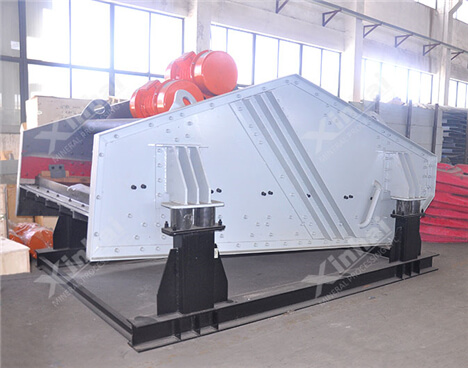Tailings processing has always been a crucial aspect of mining operations. It's not just about efficient resource utilization but also about environmental preservation and ecological equilibrium. Among the various devices used for tailings management, the tailings dewatering screen stands out as a key player due to its unique functionality and remarkable outcomes. This article will thoroughly discuss the role and features of tailings dewatering screens.
The tailings dewatering screen is a crucial piece of equipment in mining, specifically designed for dewatering tailings slurry. Its primary function is to separate solid particles from the water within the tailings, thereby increasing the solids content. This process not only diminishes the volume of tailings and the area required by tailings ponds, but also lessens the environmental pollution risks associated with tailings. Features of the tailings dewatering screen include:
Efficient Dewatering: Advanced screening technology enables efficient dewatering of tailings in a short time, enhancing dewatering efficiency.
Compact Structure: Compact design, small footprint, easy to install and relocate, suitable for various mining environments.
Easy to Operate: Simple operation, convenient maintenance, adaptable to various tailings properties and processing requirements.
Energy-saving and Eco-friendly: Low energy consumption, reduced operating costs, aligning with the green development goals of modern mining.
Strong Adaptability: Applicable to tailings treatments of diverse natures, meeting the tailings management needs of various mining companies.

High-Frequency Dewatering Screen is a new type of tailings treatment equipment that uses high-frequency vibration technology to achieve efficient dewatering of tailings. This device is widely used in tailings treatment of various mining enterprises, and the effect is significant.
1.Equipment features
High-Frequency Vibration Technology: Advanced high-frequency vibration technology ensures high screening efficiency and significant dewatering results.
Structural Optimization Design: The equipment features a compact structure, requires a small footprint, and is convenient to install and maintain.
Energy Efficiency and Environmental Friendliness: The equipment operates smoothly with low energy consumption, aligning with the green development goals of modern mining.
Versatility: Applicable to tailings treatment of various types, it offers strong adaptability and a broad range of applications.
2.Application effect
High-Frequency Dewatering Screen has shown excellent dewatering effect in practical applications. Here are some specific application effects:
High dehydration efficiency: The equipment can effectively separate the moisture in the tailings in a short period of time, increasing the solid content of the tailings.
Reduce tailings pond occupancy: The volume of dehydrated tailings is significantly reduced, reducing the occupied area of the tailings pond and lowering the cost of tailings treatment.
Reduce environmental pollution: Equipment can effectively reduce the pollution of tailings to the environment and improve the environmental treatment level of tailings.
Improving resource utilization: Equipment can further enrich valuable metals in tailings, increase resource recovery rates, and increase economic benefits.
3.User reviews
Since its launch on the market, XINHAI High-Frequency Dewatering Screen has received unanimous praise from a wide range of users. Users generally believe that this device has stable performance, significant dewatering effect, easy operation, and convenient maintenance, making it an ideal choice for tailings treatment.
Tailings dewatering screens play an important role in tailings treatment, effectively increasing the solid content of tailings, reducing the occupation of tailings ponds, lowering environmental pollution, and improving resource utilization.High-Frequency Dewatering Screen produced by Xinhai Mining Equipment has superior performance and significant dewatering effect. Its high-frequency vibration technology, structural optimization design, energy conservation and environmental protection, and strong adaptability have made it perform well in tailings treatment and have been favored by a large number of users.